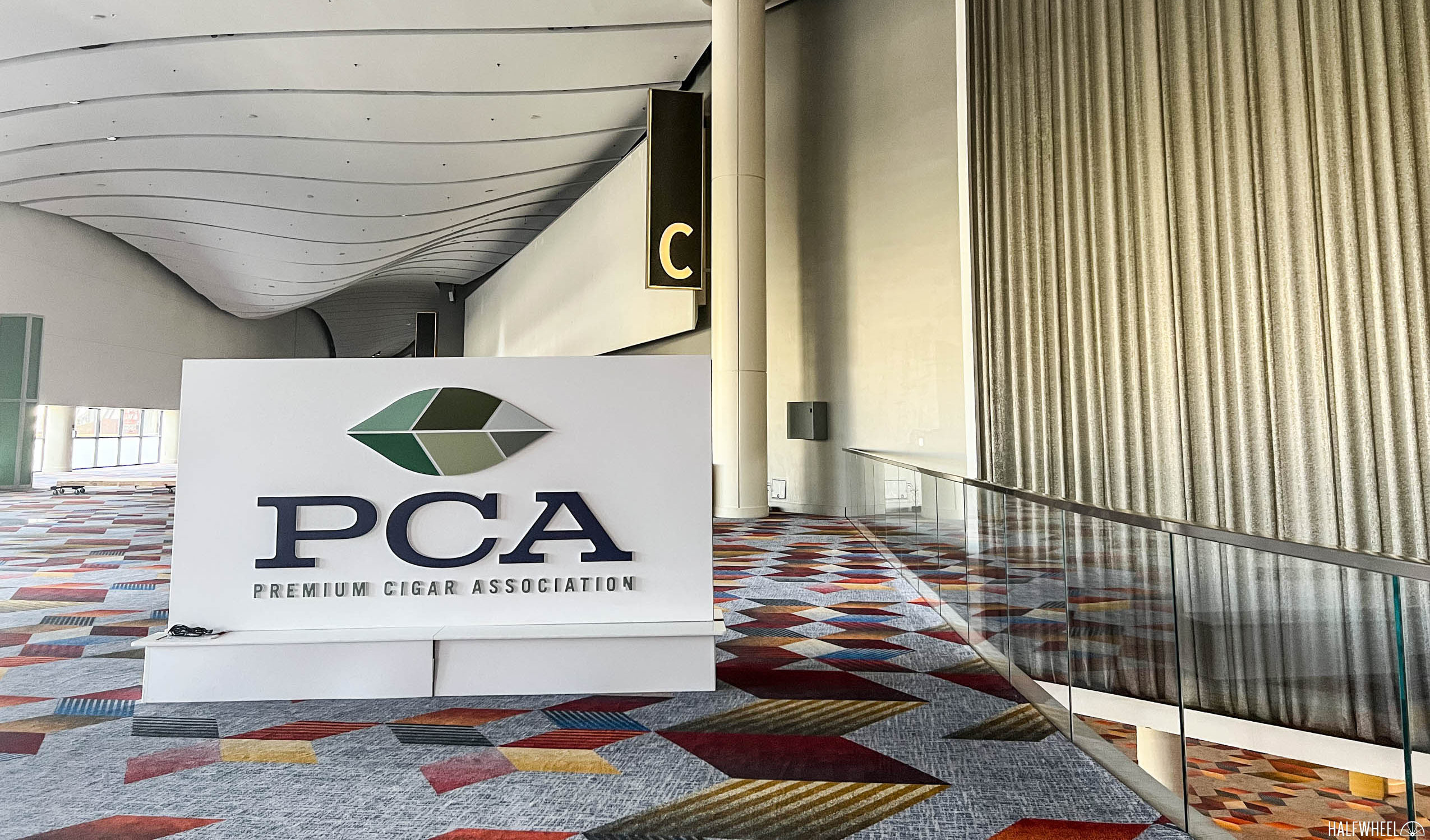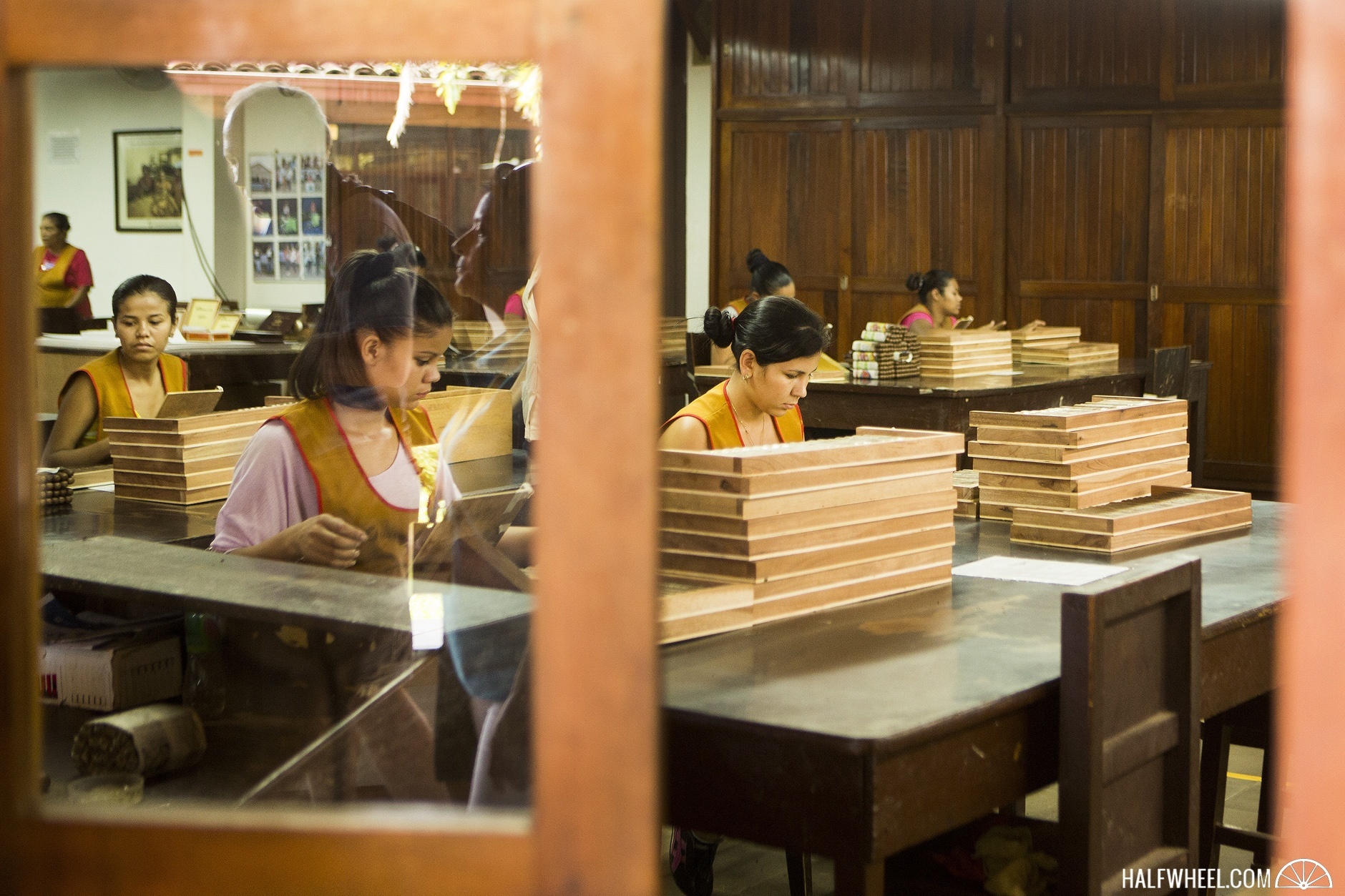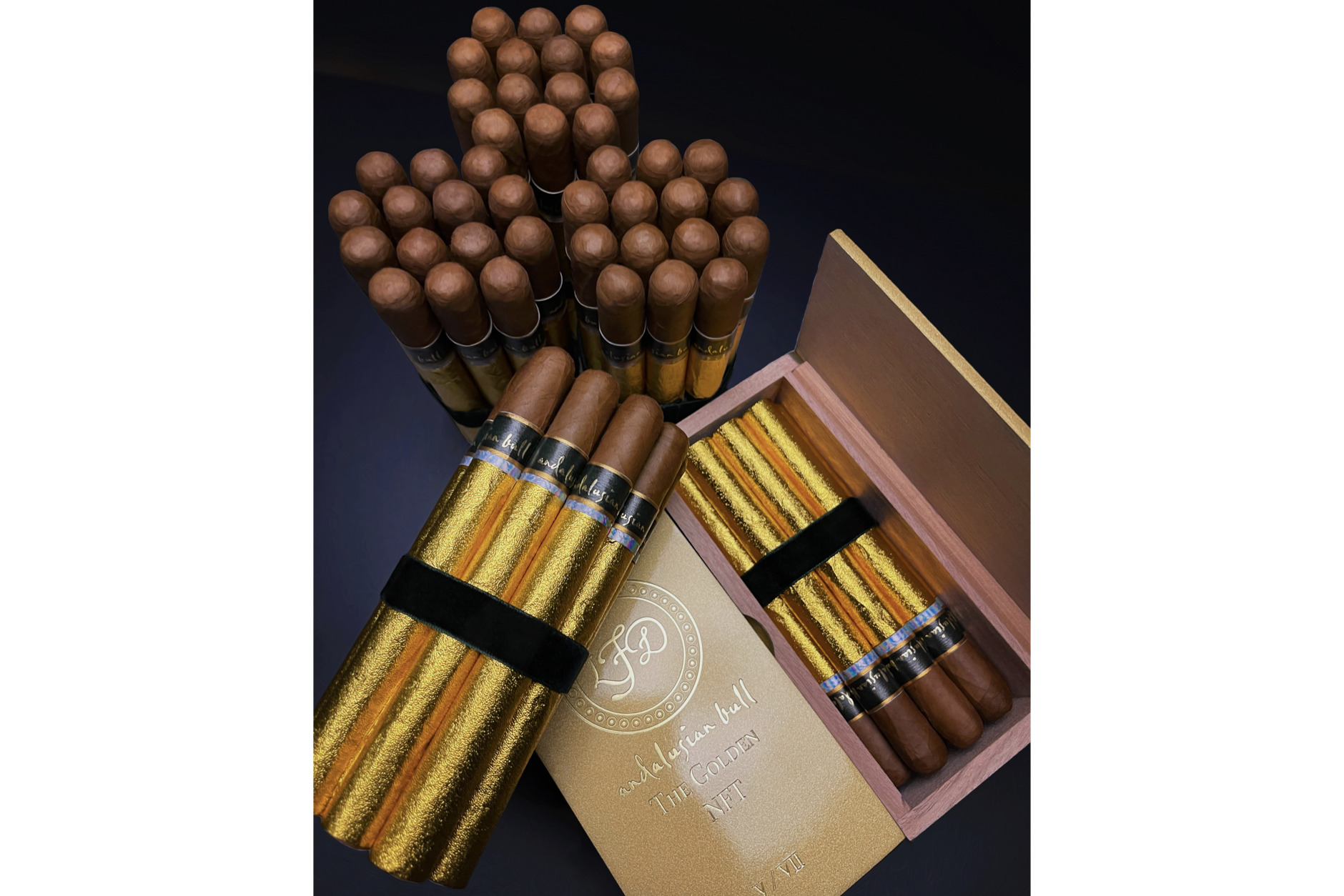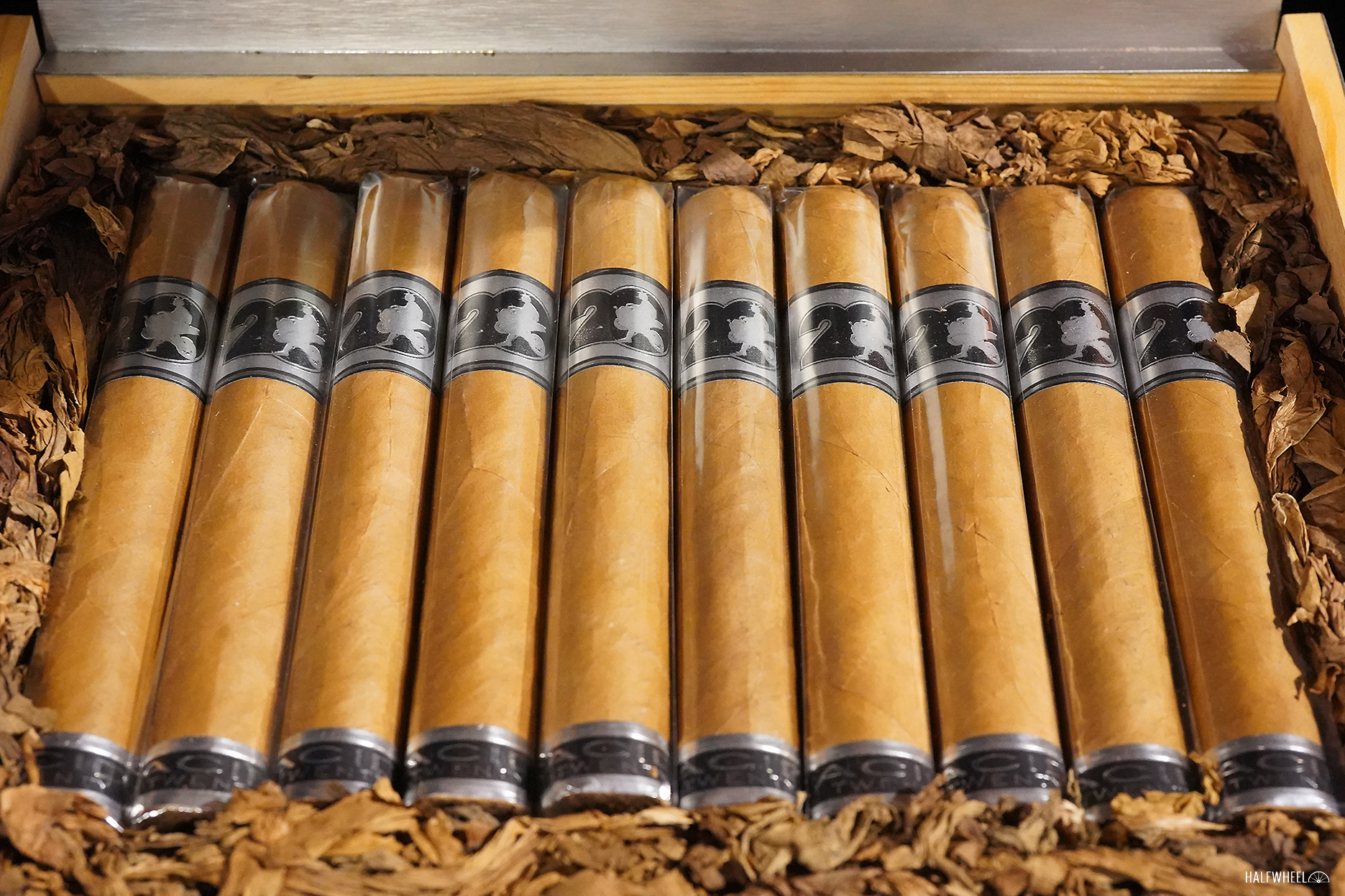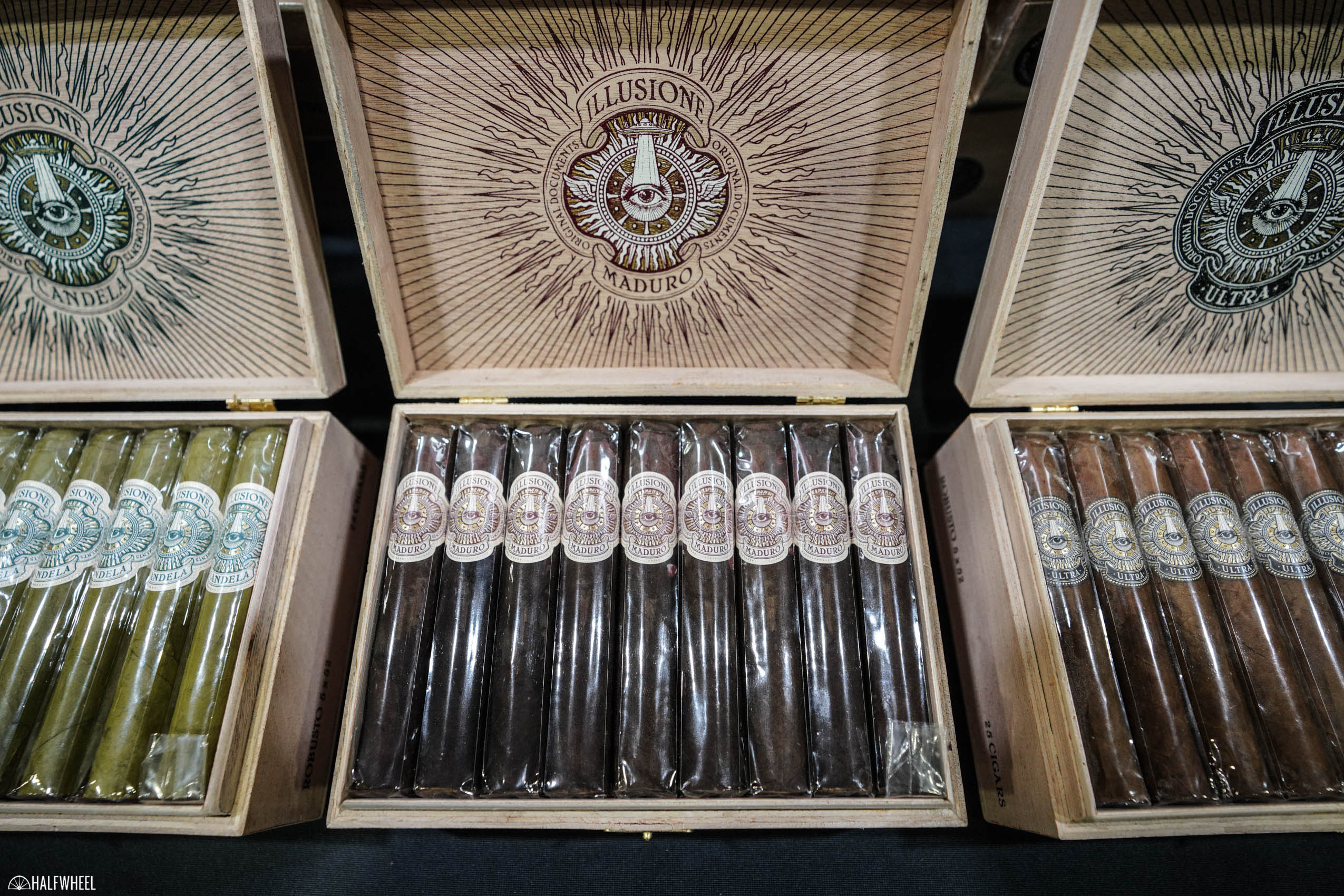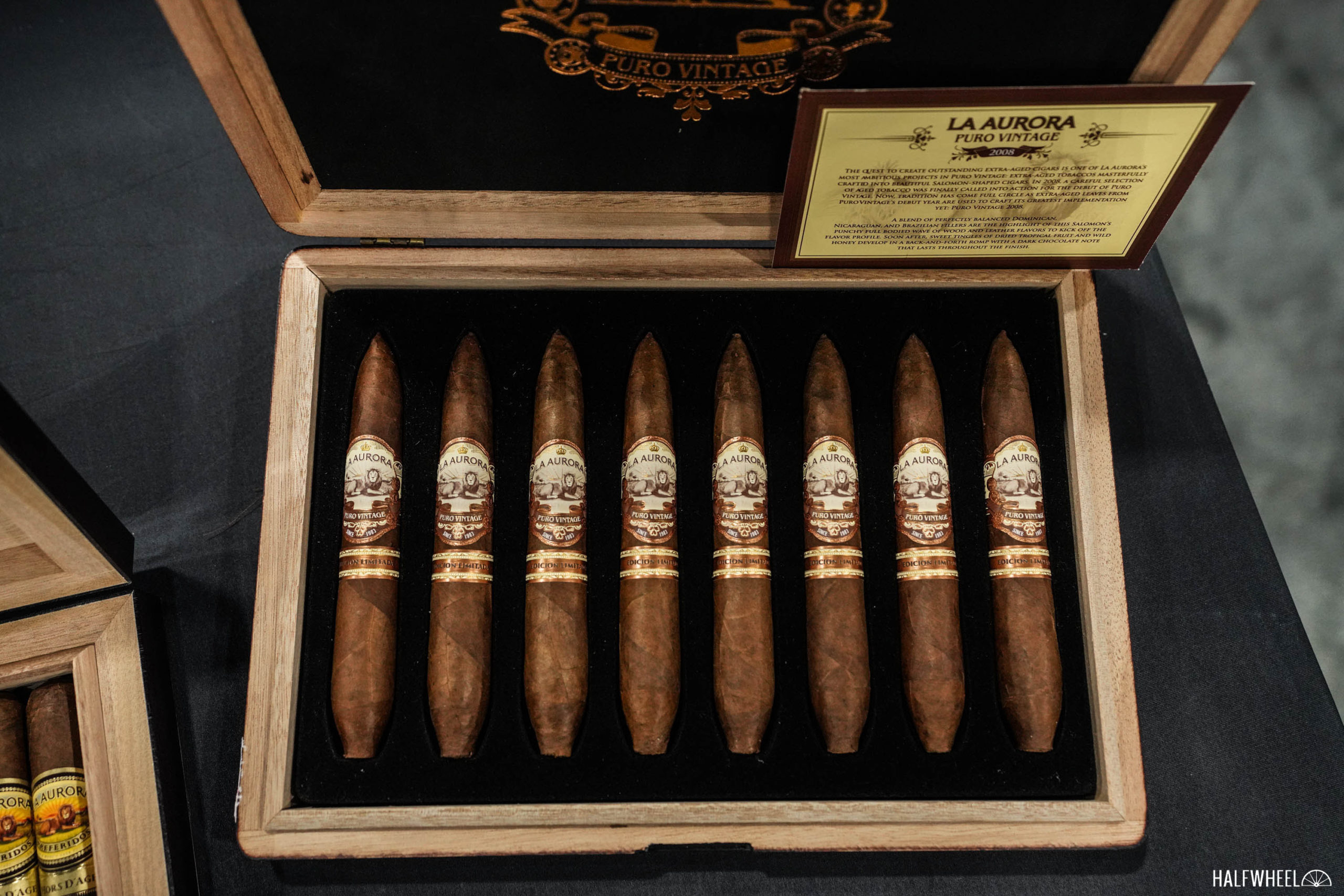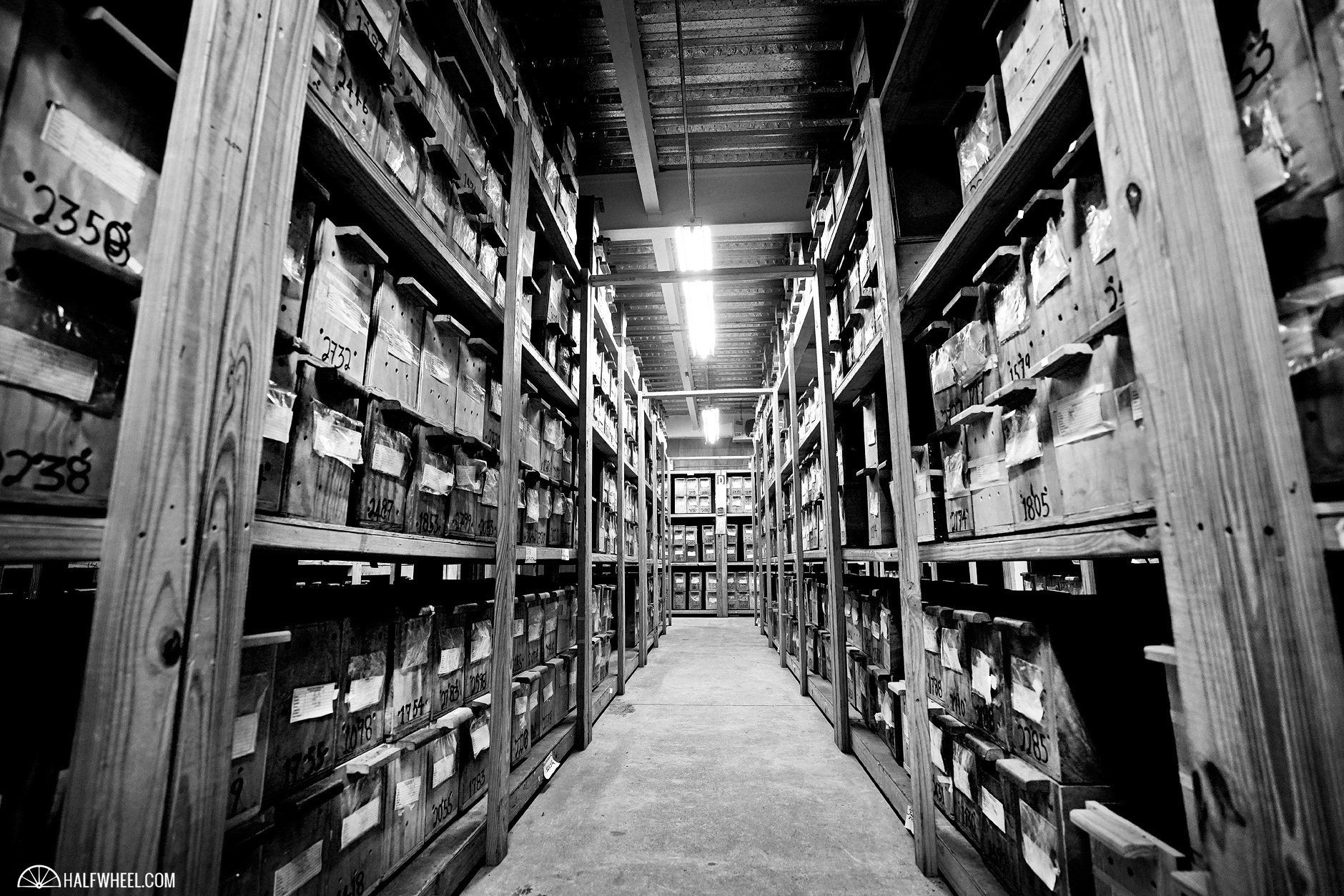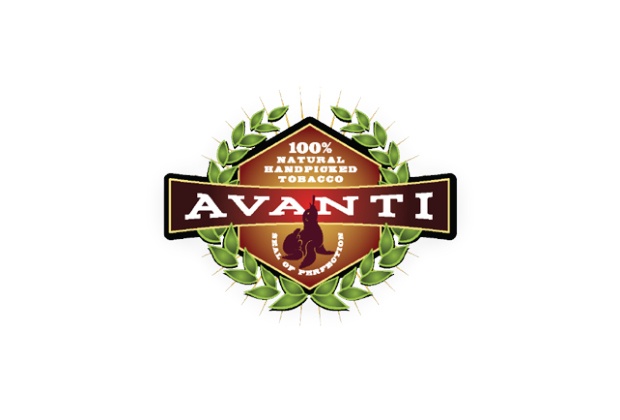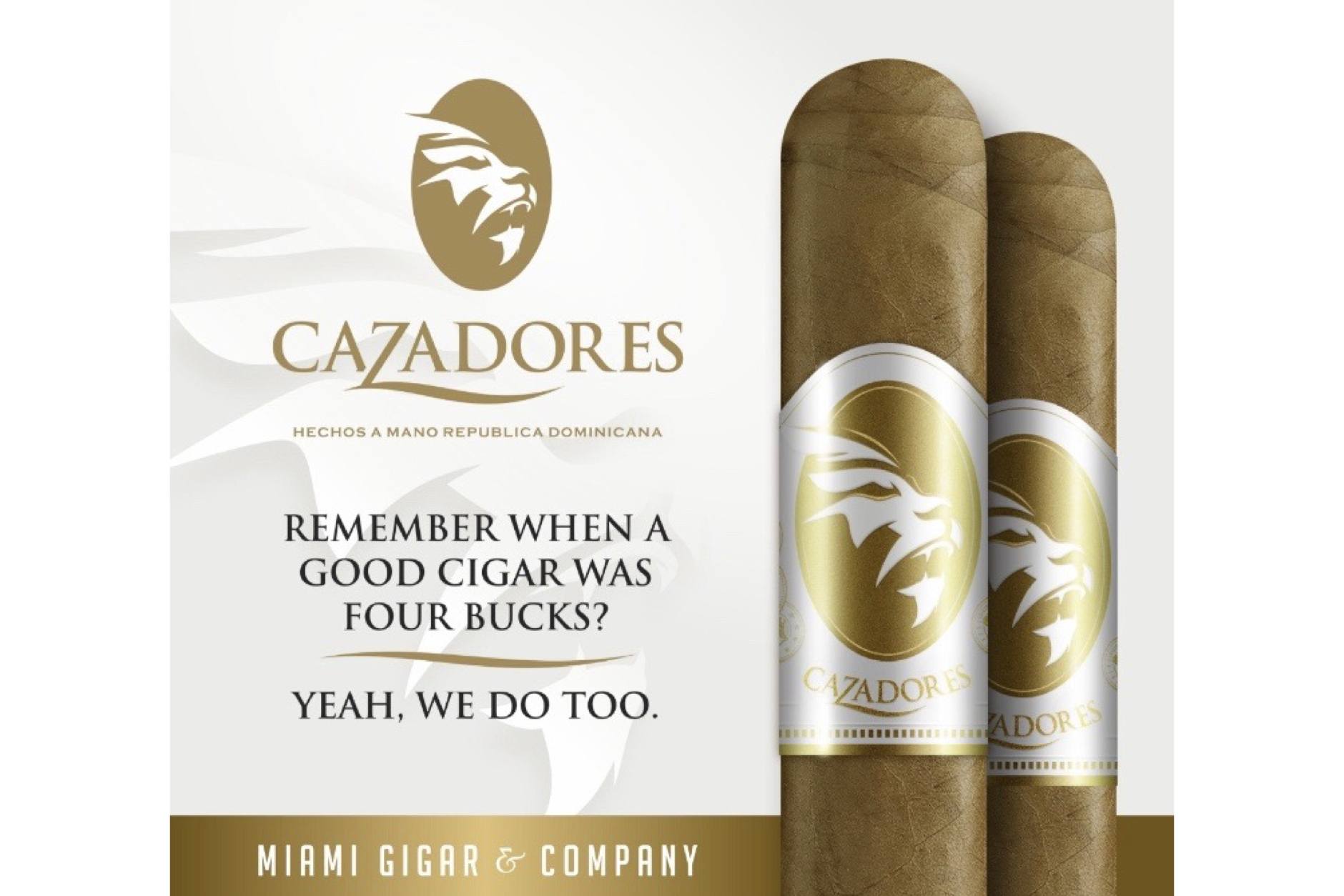First things first, yes, this editorial is a couple of days late. I try to get this out at the end of the year before, but this whole weekend holiday thing has really thrown me off.
I’ve done this editorial each year since December 2010. The concept is very simple: I think of 10 questions I have regarding the cigar world for the upcoming year, I briefly talk about them, I make a prediction and then a year later, Patrick Lagreid follows up to see how the predictions played out.
The 2023 list is amongst my favorite lists to date. It’s 10 very interesting questions, not all of them are related to regulations, and some of them are even specific to a single company. As always, these aren’t in any sort of order. Buckle up, it’s going to be an interesting year.
1. Where will PCA 2024 take place?
Yes, the 2023 list starts with a question about 2024.
In July 2022, the Premium Cigar Association (PCA) announced that the 2023 trade show would be at the Venetian in Las Vegas, and also said that it had not yet determined where the 2024 trade show would take place. Its leadership spoke about how complications at the Las Vegas Convention Center (overbooking) and the Tampa Convention Center (construction) made both locations not viable for 2024, but possibilities for 2025. As such, the organization’s thinking was to have a one-year deal for 2024 and then negotiate a multi-year deal starting in 2025.
The PCA publicly said it was considering a return to Las Vegas, presumably at the Venetian in July 2024, or going to New Orleans in May. It still has not announced a decision, but I’ve begun to think that it’s not simply a matter of two choices.
Resorts World Las Vegas recently held Cigar Aficionado’s Big Smoke 2022, which moved out of its previous venue, the Mirage. Resorts World has also been active in becoming a partner for TPE 2023, PCA’s most direct competitor, and has been on the trade show floor during past PCA Convention & Trade Shows. I suspect that it will get some consideration for the 2024 trade show, and perhaps, even beyond.
Prediction: I think the likeliest scenario is to run it back at the Venetian in 2024.
2. How many companies with factories in Nicaragua open up factories in Honduras?
Nicaragua has problems.
While the violence and protests of 2018 have been subdued, the country is experiencing extensive emigration. This is something that has been felt by the cigar companies in Nicaragua, which sends more premium cigars to the U.S. than any other country. It’s also creating a very interesting dynamic, as many cigar companies are looking to expand their operations, but the labor in Nicaragua—especially in Estelí—is a major issue and seemingly not one that is going to get better.
Companies with operations in Estelí have begun to look elsewhere for expansion plans. Condega and Jalapa—other tobacco-growing areas in Nicaragua, though not ones known for cigar rolling—have been considered, but I’ve also begun hearing about companies looking to Honduras, where labor is more expensive but the overall situation is much more stable.
Prediction: At least two notable cigar companies that make cigars in Estelí will announce they are planning new factories in Honduras.
3. Are we done with cigar NFTs?
In August, La Flor Dominicana sold seven NFTs that came with custom humidors and the rights to regularly purchase a special cigar for a combined price of more than $600,000. Shortly after that, Smoke Inn announced that it planned on releasing an NFT with Tatuaje as part of the South Florida’s store Tatuaje Anarchy series. Those NFTs are scheduled to go on sale in Q1 2023, though I don’t believe any further details have been announced.
Given the success of LFD’s NFT and the copycat nature of the cigar business, I would have expected more cigar-related NFTs to be announced in September, but it’s been quiet.
I suspect that the answer to this question is pretty tied to the Smoke Inn NFT, or at least whatever the next cigar NFT that goes on sale is. If the Smoke Inn project is able to generate tens of thousands of dollars per NFT, I think more companies will be encouraged to try to cash in on the concept, but if those packages—which include 60 cigars as well as the ability to purchase more—are generating say $5,000, I think the gig might be up.
Prediction: No, we are not. There will be at least more cigar NFT project that goes live beyond the Smoke Inn one.
4. When will the Arturo Fuente/Padrón Legends ship?
Earlier this summer, Arturo Fuente and Padrón showed off Legends, a joint project between the two storied companies. While the project and the cigars were shown off, many details including price, release date and production numbers were not announced.
There are probably a half dozen or so likely dates that could be targeted:
- Carlos A. Fuente’s birthday/passing
- José O. Padrón’s birthday/passing
- PCA Convention & Trade Show 2023
I think the most likely and obvious date is June 18, i.e. Father’s Day.
Given that the Legends project is made to honor the respective fathers, given that Fuente regularly releases an OpusX/Añejo shipment for Father’s Day, given that cigars are popular on Father’s Day—this seems like the most sensible option.
That leads to the next question, which is whether these companies will actually be able to ship the project “on time.”
Prediction: I’ll be optimistic and say that it ships around Father’s Day.
5. What’s the top headline related to flavored cigars in 2023?
In 2022, the two biggest stories regarding flavored cigars were very big stories: the FDA announced plans to ban flavored cigars and California’s ban on most flavored tobacco and vaping products went into effect.
My understanding is that California’s ban is probably not what it sounds like, meaning products you think are “flavored” might still be on sale, but the heat is picking up on flavored cigars.
To me, there are three candidates for what’s the biggest thing to happen to flavored cigars in 2023. The first two:
- Choice A is clear, the FDA announces its plans in the form of a proposed rule, which wouldn’t immediately change any laws, but would show that the agency is serious about moving quickly.
- Choice B is that another state joins Massachusetts and California as one where flavored tobacco products are banned. The tricky part is which state that would be. Hawaii is an obvious candidate, but that wouldn’t be that big of a news item; Pennsylvania would be massive, but that seems unlikely; so that leads to New York, which seems like it could be in play.
Let’s say both happen, Choice A (FDA) trumps Choice B (a state). An FDA announcement of a proposed rule wouldn’t immediately change any laws because the agency has said it will wait at least one year between when the final rule, which comes after a proposed rule, goes into effect. Furthermore, there’d be an onslaught of lawsuits that would hold up the new law. But a 2023 proposed rule would signal a very accelerated timeline from the agency.
I suspect, for a number of reasons, that is unlikely. In April 2021, the FDA—as part of a court-ordered response to a lawsuit—announced that it would make an announcement regarding flavored cigars and menthol cigarettes “within a year.” The agency waited 364 days to make that announcement. I don’t think the agency is in a major rush to move forward with these plans and I’m not really sure how it could move forward with these plans until it gets a better grasp of e-cigarette and vaping regulation, something the agency itself has publicly acknowledged is an issue.
But I mentioned three options.
Choice C is a wild card: litigation regarding California’s ban on the sale of most flavored tobacco products. There’s existing litigation over other issues, but if there’s a lawsuit filed over how California is removing flavored products from the market, that would be larger because it would confront a number of issues, including whether states have this authority.
Prediction: The largest story regarding flavored tobacco in 2023 is a state not named New York banning the sale of most flavored tobacco products.
6. How does Illusione’s makeover go?
At the 2022 PCA Convention & Trade Show, Illusione announced that it was introducing new packaging for all of its lines, extensively rebranding most of the lines and adding some new cigars in the process.
Highlights include:
- The Illusione Original Documents lines are getting new packaging and the sizes are getting standardized, for example the ~88~ is now called Robusto and the mj12 Maduro is now the Illusione Maduro Gordo.
- There’s a new Original Documents Habano line that will be made by AJ Fernández’s San Lotano factory, the first time Illusione has worked with AJ.
- Singularé is getting reworked to be a regular production line.
Most importantly, the cigars are staying the same. The existing blends will continue to be made in the existing sizes at the same factories.
I am fond of the current Illusione packaging. I like the simplicity, I like the punk aspect, I know what ~hl~ stands for, or at least I think I do. I certainly like the way the cigars currently look more than what I saw from the new packaging. But I understand some of the arguments I’ve heard for the changes: 25-count boxes are easy on retailers, there’s a real benefit in not confusing new consumers with ~68~, ~88~, ~888~, etc. and instead calling it Corona, Robusto, Churchill.
While my opinions on the matter might be heard by more people, I am just one person. And someone that has been quite wrong before when it comes to these sorts of moves.
But this is an extremely interesting thing for me not because I think it will fail, but because I know this is a major gamble. I can’t think of the last time an established company, one that wasn’t struggling, decided to redo all of its packaging at once, particularly without also trimming down its portfolio. AGANORSA Leaf has been redoing packaging for three years, while the AVO and Camacho makeovers were done while also getting rid of a number of SKUs. You just don’t see companies take this sort of risk.
I’m not going to make a prediction because I don’t know how it would be judged. Illusione makes good cigars and I think that wins out.
7. What’s the state of Cuban cigars in 2023?
Prediction: Not good.
Prices are going to continue to climb. We’ve heard rumblings that Cohiba production might be declining. There are other large issues at Habanos S.A. and the island itself. Then there’s the aftermath of Hurricane Ian, which was particularly devastating from Cuba’s prized growing region, Pinar del Río.
I don’t see any reason as to why 2023 will be a better year for buying Cuban cigars than 2022, other than that the higher prices may mean that stores have more inventory on hand.
Hurricane Ian made me think a lot more about Cuba and what the medium-term future holds. My understanding is that the effects of COVID-19 and the lockdown were a lot worse for Cuba than many other parts of the world. While deaths maybe weren’t impacted, the island’s reliance on foreign visitors and their foreign currency dried up. Many of Cuba’s allies—China, Russia and Venezuela—have pretty obvious issues and the New York Times recently described the emigration of Cubans to the U.S. as “historic.”
My real question is more long-term and much broader than what about the state of cigars in 2023. What happens if the normal “we will just rebuild” after a hurricane is no longer an option?
Cuba’s cigar industry is in the midst of a number of major events—COVID recovery, historic shortages, labor issues, a new co-owner, rebuilding Pinar del Río—that have all cascaded together and while I don’t think the industry is going to suddenly die tomorrow, I do wonder if a return to where it was in 2019 is even possible, and if not, what’s the “new normal.” The questions about rebuilding become particularly murky when you consider what Cuba’s future looks like due to climate change. How can an island that isolated and that poor continue to invest in rebuilding if hurricanes like Ian suddenly become a twice in a decade situation?
8. Does anyone try to make their own Cohiba?
Disclosure: I am not an attorney.
Last month, the U.S. Trademark Trial and Appeal Board announced it was canceling General Cigar Co.’s Cohiba trademark, the latest in a 25-year saga over the trademark between General and Cubatabaco, the Cuban tobacco monopoly. My first thought was, “I guess that’s still going on.” And my next thought was, “I wonder if anyone tries to launch their own Cohiba?”
I have no idea how legal trying to sell your own Cohiba in the U.S. would be, but if General’s trademark is canceled then it seems like a door has been opened. That said, any company willing to do this would also need to be willing to deal with the potential consequences, namely, what happens if General’s parent company—Scandinavian Tobacco Group—gets upset and chooses to punish a company by reducing orders through its retail businesses: Cigars International, Cigar.com, Cigar Bid, Meier & Dutch, Thompson, Cigora, etc.
I think the odds of an established company like an Alec Bradley or an Oliva doing this are basically nil, but I think smaller companies, particularly those willing to push the envelope, might try. What’s tough is trying to envision what this would look like. A Caldwell parody of Cohiba seems plausible, though it seems like Caldwell is trying to move away from that. Jas Sum Kral is known for pushing the limits and certainly wouldn’t mind the PR.
There are some real issues. Even if General’s trademark has been canceled, the company announced it is appealing it and will certainly not go down without a fight. Furthermore, there still is legal liability if a company were to try this, including potentially from Cubatabaco.
Prediction: I don’t think anyone will try in earnest. The threat of lawsuits and further repercussions from STG is probably enough to scare off most people from trying this.
9. Can La Aurora USA Make a Difference?
For more than three decades, Miami Cigar & Co. has distributed La Aurora products in the U.S. That will come to an end in April when La Aurora will take over its distribution. Given a variety of things that have happened over the last couple of years, this isn’t all that surprising.
As I mentioned in a recent review, to me La Aurora’s issues in the U.S. aren’t related to the quality of cigars, but rather, an inability to adapt to the U.S. market and the increased competition. The company’s branding is heavily reliant on its long history, something most American consumers are unaware of. Its narrow reliance on that history makes it so even I find the branding to be confusing.
What’s unclear is whether La Aurora USA—the new distribution company helmed by former General Cigar Co. employees—is going to be allowed to fix any of this. While I’m sure that a full-time, national sales force will mean La Aurora’s products will be on more shelves, I think the issues are probably more related to how the products are branded and packaged rather than how they are distributed.
Prediction: La Aurora will be in more stores and there will be new lines more geared to the American market, but an AGANORSA Leaf-style makeover is not on the horizon.
10. What does Judge Mehta do?
The current state of cigar regulations in the U.S. is divided into two groups:
- “Premium Cigars” — Any cigar that meets this definition of “premium cigars” is subject to some basic reporting to FDA and user fee requirements. Notably, these cigars have not gone through the product approval process.
- All other cigars must pay user fees but are subject to many more regulatory aspects, notably, product approval.
This is a result of a lawsuit filed in 2016, the same year FDA’s cigar regulations went into effect, which has helped to delay and reduce the regulations. In the summer of 2022, the judge ruled that FDA acted improperly when it was writing the regulations, specifically, that the agency failed to consider data provided to it regarding how premium cigars were consumed.
Because the agency didn’t properly evaluate this information, the judge has indicated that FDA cannot regulate premium cigars like all other cigars. We are waiting on Judge Amit P. Mehta of the U.S. District Court in Washington, D.C. to make his ruling. There are three parts of this that are important:
- What does Mehta rule? In simple terms, he could either tell FDA it needs to go back to square one or square zero. There’s a strong, optimistic belief that it will be the latter. In terms of process, the ruling is just how far back in the process it might go.
- How is “premium cigar” defined? While there’s currently a definition of “premium cigar” in use, it’s neither really been contested nor is it one that Mehta himself came up with. It was proposed by FDA and adopted for a different, temporary part of the court case.
- What happens to user fees? This only applies if the answer to question one is square zero. Cigar companies might be entitled to get refunded for the user fees they paid. If this happens, I think there’s a real chance for a very bitter and contentious shitshow to take place.
Prediction: Mehta rules to send it back to “square zero,” i.e. remand with vacating. Bonus predictions: The definition of “premium cigar” used is more or less the one that Mehta will use. The user fee refund lawsuit becomes a shitshow, though I’m guessing that’s a post-2023 thing.


